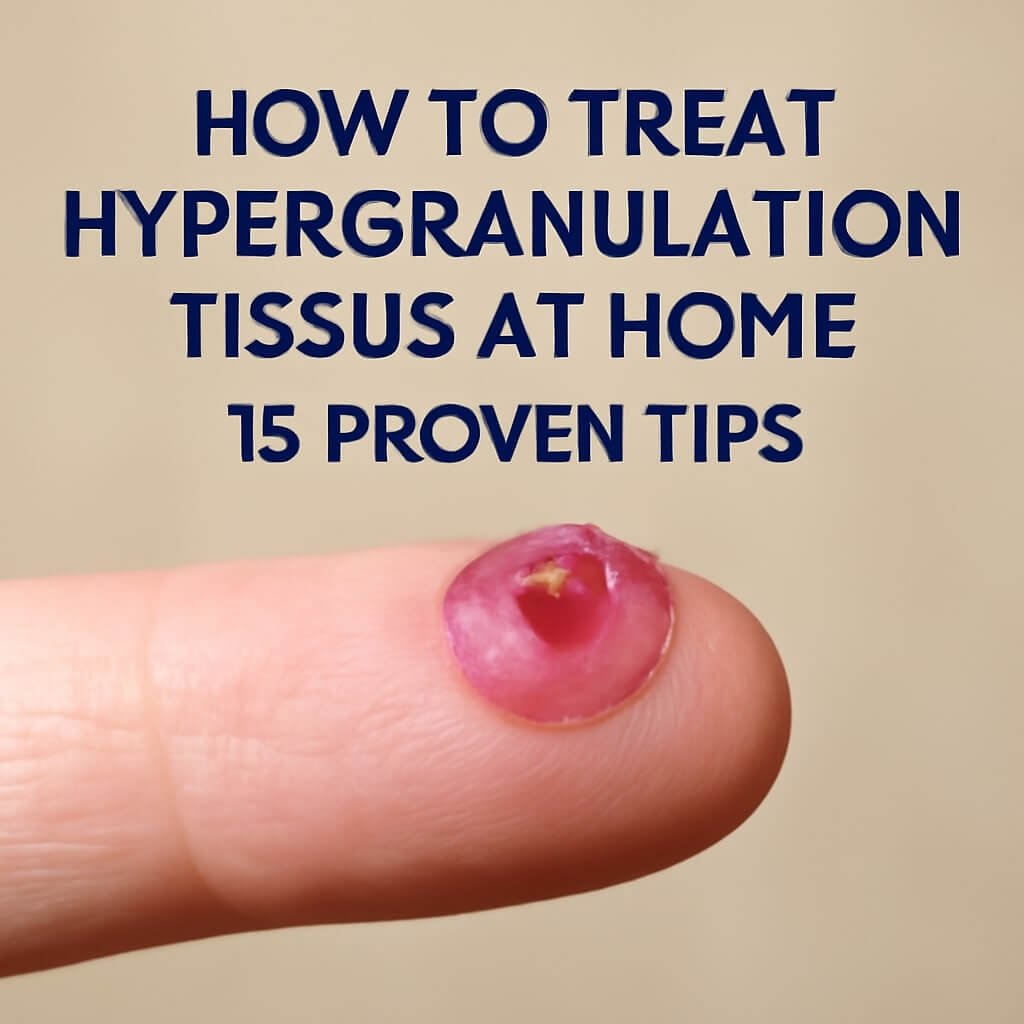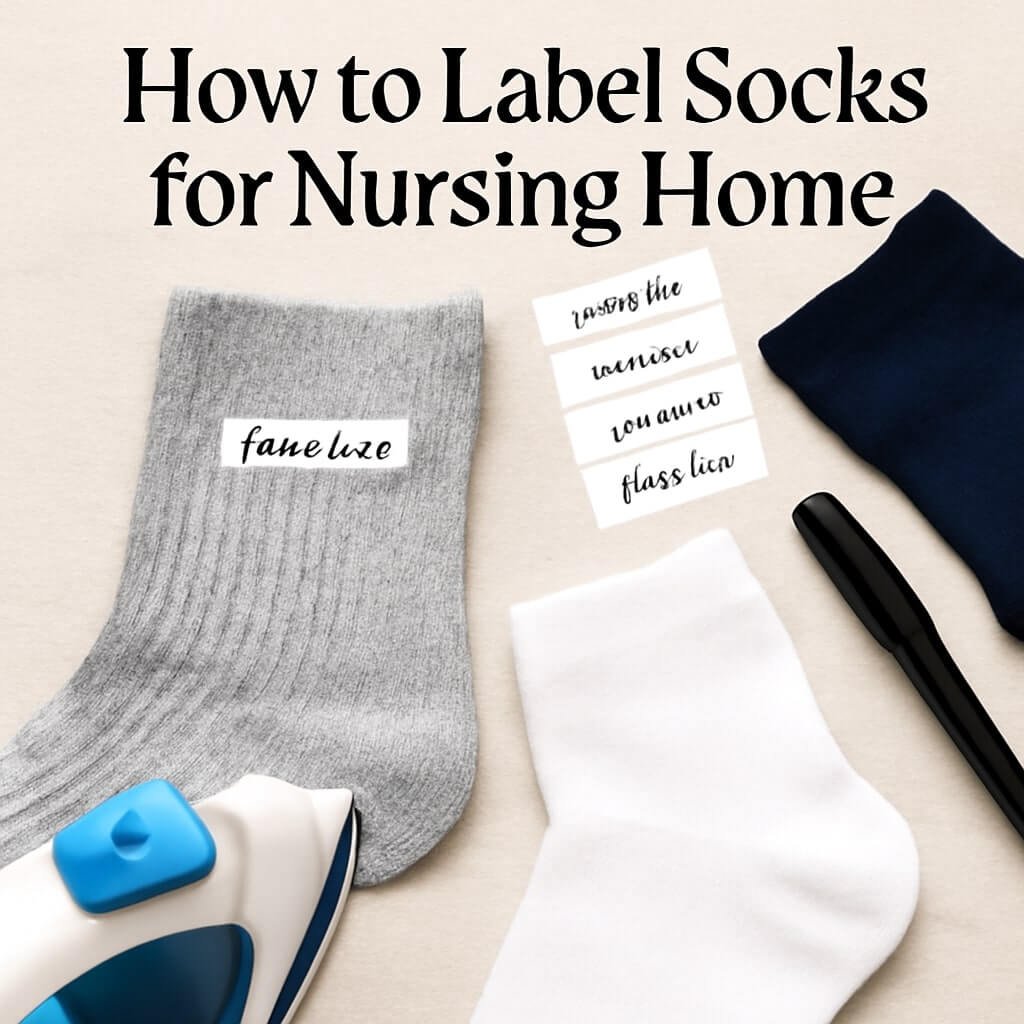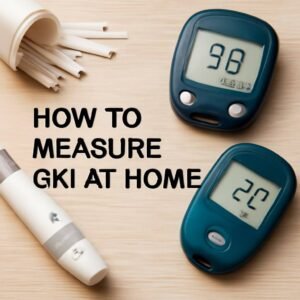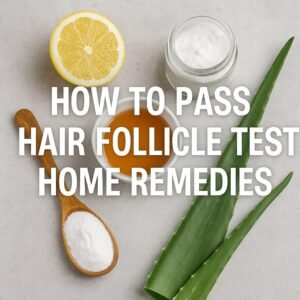Hypergranulation tissue can be a frustrating complication during wound healing. If you’re dealing with this issue, knowing how to treat hypergranulation tissue at home effectively is essential to promote proper healing and avoid further complications. This comprehensive guide will walk you through everything you need to know—from understanding what hypergranulation tissue is, to 15 proven home treatment methods that you can safely use.
Understanding Hypergranulation Tissue
What is Hypergranulation Tissue?
Hypergranulation tissue, sometimes called overgranulation or proud flesh, is an excessive growth of granulation tissue that forms during the wound healing process. Normally, granulation tissue is a good sign—it fills in the wound, bringing blood supply and nutrients. But when this tissue grows beyond the wound edges, it can delay healing and cause discomfort.
Common Causes of Hypergranulation
Several factors can lead to hypergranulation tissue development, including:
- Excess moisture around the wound area
- Repeated trauma or friction from clothing or movement
- Infection or inflammation delays normal healing
- Poor wound care or improper dressing techniques
- Certain medical conditions, like diabetes or immune disorders
Recognising Hypergranulation Tissue Symptoms
Identifying hypergranulation tissue early helps you address it before complications arise. Signs include:
- Raised, bright red, and sometimes shiny tissue that extends beyond the wound edges
- A wet or moist appearance
- Bleeding easily when touched
- Wound healing seems stalled or slowed down
- Mild discomfort or tenderness around the area
Risks and Complications of Untreated Hypergranulation
Ignoring hypergranulation tissue can cause:
- Delayed wound closure
- Increased risk of infection due to exposed tissue
- Scarring or poor cosmetic results
- Potential for the wound to worsen or become chronic
When to See a Doctor for Hypergranulation Tissue
While many mild cases can be treated at home, certain situations require medical attention:
- Persistent or worsening tissue growth despite home care
- Signs of infection, such as increased redness, warmth, pus, or fever
- Excessive bleeding or pain
- Wounds in sensitive or complicated areas (like near joints or the face)
Top 15 Home Treatment Methods for Hypergranulation
Here are practical, effective ways to treat hypergranulation tissue at home and support healthy wound healing.
1. Keep the Wound Clean and Dry
Proper hygiene is the cornerstone of wound care. Clean the wound gently with mild soap and water or sterile saline solution. Avoid harsh scrubbing to prevent irritation. Keeping the wound dry prevents excess moisture that can encourage overgrowth.
2. Use Salt Water (Saline) Soaks
Saline soaks help cleanse the wound and reduce bacteria. To make a saline soak at home:
- Dissolve one teaspoon of salt in a cup of warm, sterile water.
- Soak a clean gauze pad in the solution.
- Apply gently to the wound for 10-15 minutes, once or twice daily.
3. Apply Sterile Dressings Correctly
Use non-adherent, sterile dressings to protect the wound without sticking to the tissue. Change dressings regularly, especially if they become wet or dirty, to reduce infection risk.
4. Use Over-the-Counter Corticosteroid Creams
Mild corticosteroid creams can reduce inflammation and hypergranulation. Apply as directed, usually a thin layer once or twice a day. Consult a pharmacist or doctor before use to avoid overuse or side effects.
5. Avoid Excessive Moisture
Too much moisture can promote hypergranulation. Make sure dressings are absorbent and change them often. Avoid prolonged exposure to water (like soaking in baths) until the wound improves.
6. Use Natural Remedies like Honey or Aloe Vera
Medical-grade honey has antibacterial and healing properties that may help reduce excessive tissue. Aloe vera gel is soothing and anti-inflammatory. Apply small amounts to the wound area after cleaning, but ensure you use products meant for wound care.
7. Consider Hydrocolloid Dressings
Hydrocolloid dressings maintain a moist wound environment while protecting from contaminants. They can also help reduce hypergranulation by balancing moisture and pressure.
8. Trim Excess Tissue Carefully
If hypergranulation tissue is excessive, trimming small parts with sterilised scissors can promote normal healing. This should be done cautiously and only if you’re confident and sterile tools are available. Otherwise, seek professional help.
9. Maintain Proper Nutrition for Healing
A diet rich in vitamins A, C, E, zinc, and protein supports tissue repair. Stay hydrated and consider supplements if your diet lacks these nutrients.
10. Avoid Irritants and Friction
Wear loose, breathable clothing to prevent rubbing on the wound. Avoid chemicals or skincare products near the wound that could irritate the tissue.
11. Use Silicone Gel Sheets
Silicone gel sheets help flatten raised tissue and reduce scarring. Apply as per package instructions after the wound has closed or is close to healing.
12. Apply Antibacterial Ointments
Use antibiotic ointments to prevent infection if the wound shows signs of bacteria or inflammation. Avoid overuse to prevent resistance.
13. Monitor for Infection Signs
Watch closely for increasing redness, swelling, pus, or fever. If these develop, consult a healthcare provider promptly.
14. Elevate the Affected Area
Elevating the wound area, especially on limbs, reduces swelling and promotes better blood flow, aiding healing.
15. Maintain a Consistent Wound Care Routine
Consistency is key. Follow your wound care regimen daily and avoid skipping steps to encourage proper healing.
Frequently Asked Questions (FAQs)
Can hypergranulation tissue heal on its own?
Yes, mild cases sometimes resolve without intervention, but home treatment speeds healing and reduces complications.
Is it safe to remove hypergranulation tissue at home?
Minor trimming can be done carefully, but it’s safest to consult a healthcare professional to avoid infection or injury.
How long does hypergranulation tissue last?
Duration varies; with proper care, it may improve in a few weeks, but persistent cases need medical evaluation.
When should I seek medical help?
If you notice infection signs, excessive pain, or no improvement after home treatment, see a doctor.
Can certain medications cause hypergranulation?
Yes, some medications like steroids or chemotherapy agents may affect wound healing and cause overgrowth.
Are natural remedies effective for treating hypergranulation?
Some natural remedies have beneficial properties, but they should complement, not replace, medical treatments.
Conclusion
Knowing how to treat hypergranulation tissue at home can make a big difference in your wound healing journey. By keeping wounds clean, controlling moisture, using appropriate dressings, and monitoring progress, you can effectively manage this condition. Remember, persistent or severe cases require professional care to prevent complications.













